PROTECT YOUR DNA WITH QUANTUM TECHNOLOGY
Orgo-Life the new way to the future Advertising by AdpathwayIt’s so lovely to have fresh, fragrant, flavorful herbs growing in the garden. Fresh herbs can make all the difference in the kitchen, elevating a dish from tasty to gourmet. Growing them is both rewarding and practical, making the garden a more beautiful place as well.
Most herbs are easy to grow, thriving in full sun and well-drained soil. It’s easy to grow them in raised beds and containers. Or, plant them right in the ground for a cottage or kitchen garden vibe. They have ornamental appeal, and pollinators love it when you let them flower.
There is a catch, of course, to allowing your herbs to flower. While pollinators will flock to their aromatic blooms, it will alter the flavor of the foliage, and not for the better. To maintain the healthiest, tastiest herbs with a beautiful form, pinch off the blooms.
Slow Bolt Cilantro
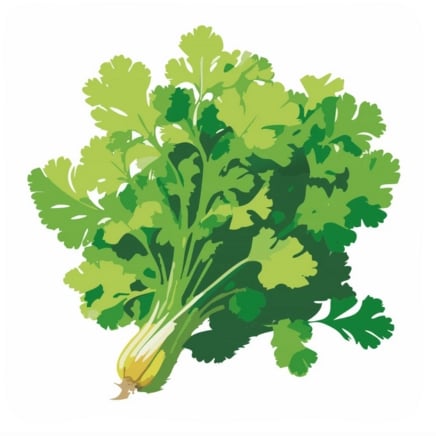

Mexican Tarragon
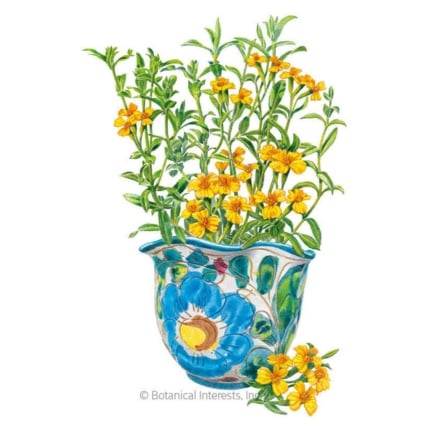
Why Pinch Your Herbs?
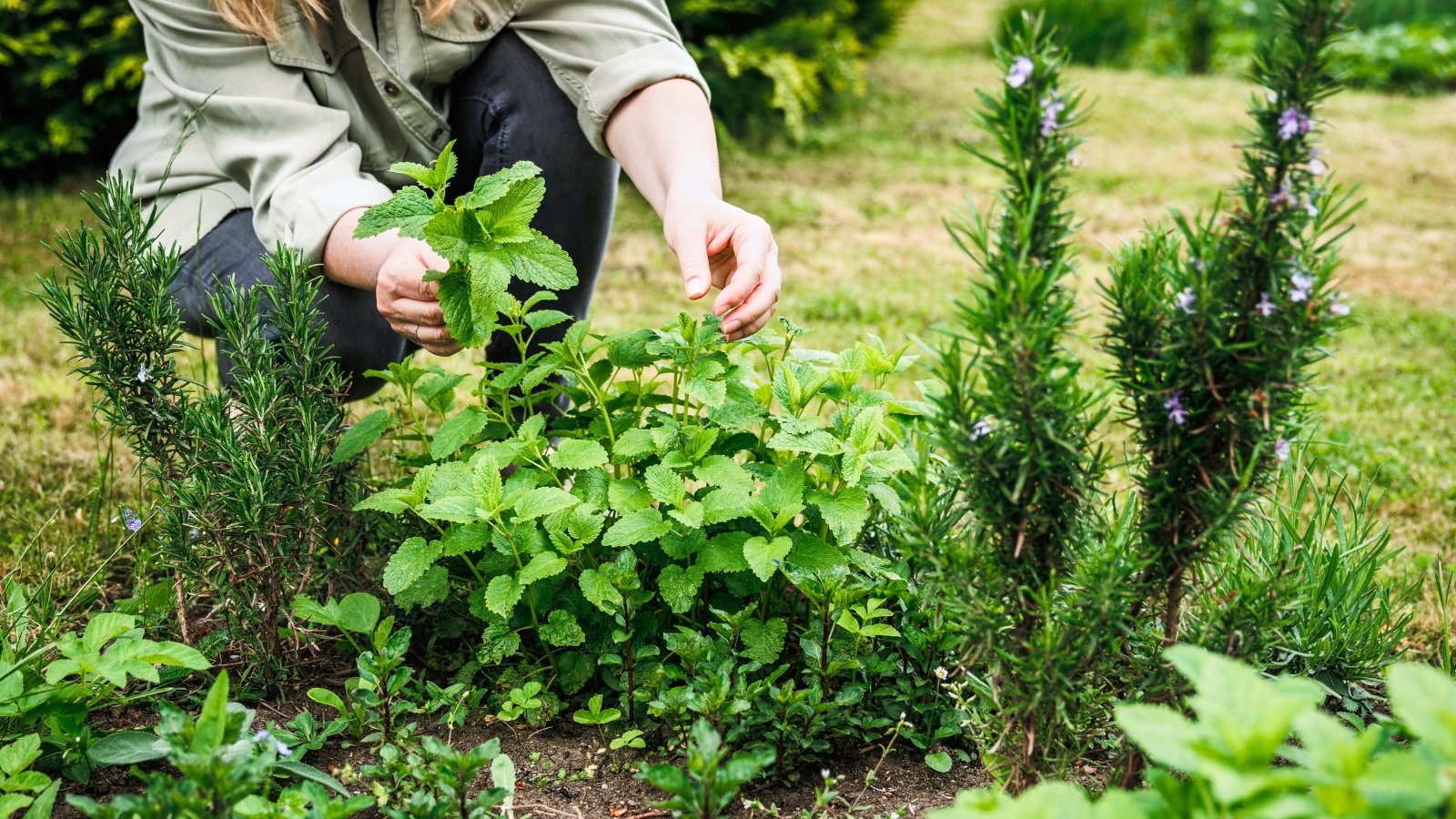 Tiny pinches now mean bigger, better harvests later.
Tiny pinches now mean bigger, better harvests later.First of all, pinching your herbs encourages a more vigorous, more attractive plant. As with all branching plants, pinching the tops of stems encourages branching at the lower nodes. The nodes are the places where leaves sprout, and also where new branches will form.
When you pinch off the tips of your stems, it redirects energy from top growth to forming new branches. Your herb will continue to grow taller, but for a period, it will put more effort into those lower branches. The result of this is a bushier form.
This bushy form is advantageous as it means that your crop will have more usable leaves. It will also be a stronger, sturdier herb, and inclement weather is less likely to have a negative impact.
Pinching the tips while your plant is young is helpful in this way. But there is another type of pinching that is equally important. Pinching off herb flowers is the way to maintain the best flavor and delay the plant’s aging process.
The Science
Here’s how that works. When an herb flowers, also called bolting, much of its energy goes toward forming those flowers. It helps in producing the sweet nectar that pollinators love so much. Sadly, this takes energy away from the developing foliage.
If allowed to remain intact, those flowers will go to seed. This requires more energy even than producing those blooms. The result is that the foliage often turns bitter, grows smaller, and the texture is less tender. This is especially true of herbs like basil, dill, parsley, and cilantro.
Preventing your herbs from flowering and going to seed also delays the aging process. It extends the harvest period and keeps the plant productive for a longer period.
When you pinch off herb blooms, you create a healthier, happier plant that remains productive for a longer period. It makes it more tolerant of wind and rain, and it keeps the leaves tender and tasty. While it does detract from attracting pollinators, there is no harm in planting a few extra herb plants. You can always leave one or two for the bees.

Timing it Right
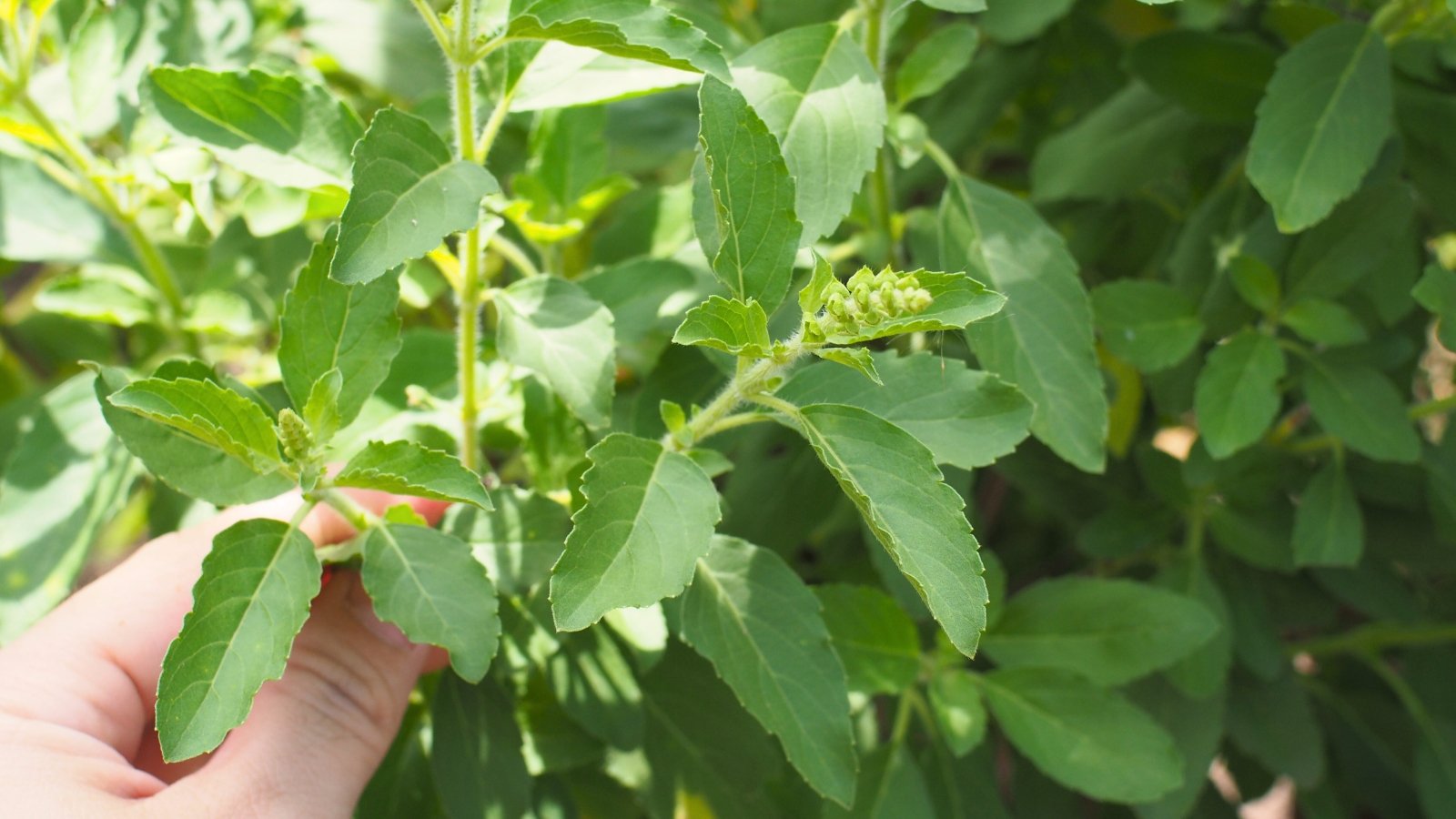 Wait too long, and your herbs might bolt.
Wait too long, and your herbs might bolt.The first round of pinching should take place long before your herb flowers. As soon as it has about three to four sets of true leaves, it’s time to pinch off the top. Only pinch that very top set of leaves, or you could end up slowing down the growth considerably.
By doing this, you encourage vigorous branching, right at the time when growth is picking up steam. You can pinch again when each branch has its own three sets of leaves. Picking those will have the same effect, and before you know it, you’ll have a lovely little shrubby herb.
Once your plant has the desired shape, you won’t need to pinch again until it’s time to pinch off your herb blooms. That doesn’t mean that you’re not free to harvest leaves. If you’re someone who harvests your herbs often, you may never need to worry about this.
However, if you go for any stretch of time between harvests, you’ll probably need to do it. The right time is as soon as you see the buds forming. If you notice a cluster of buds forming at the tip of a stem, pinch it off immediately. Don’t give it a chance to draw energy and flavor away from the foliage.
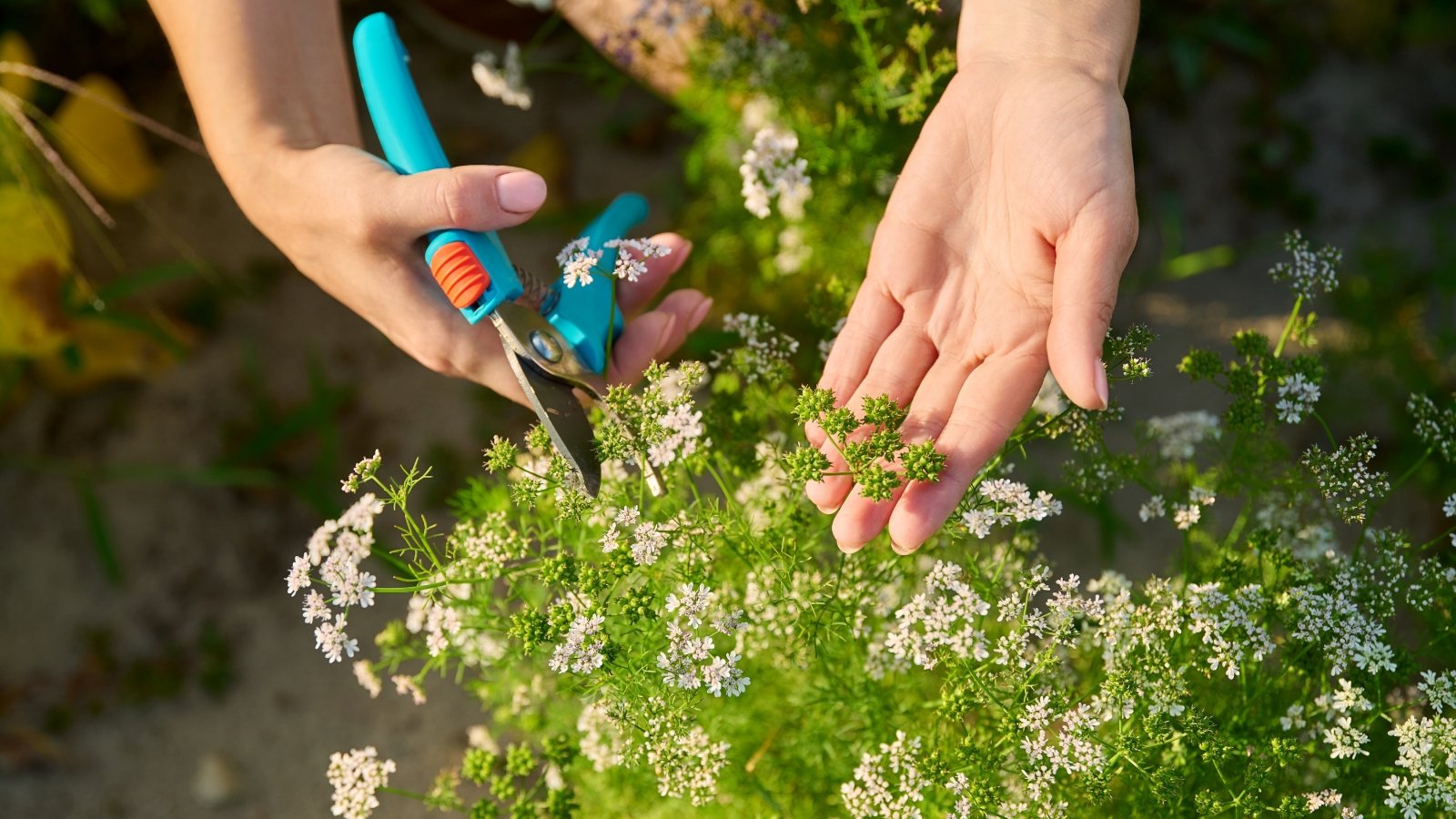 Harvesting snips make quick work of woody little stalks.
Harvesting snips make quick work of woody little stalks.You have a couple of options in terms of how you pinch off your herb blooms. It’s called pinching off for a reason, because it’s usually easiest to use your fingers.
For tender herbs like basil, dill, tarragon, and some oregano, simply use your thumb and forefinger. For those with tougher stems, you may want to bring along a small pair of scissors.
My favorite tool for pinching off herb blooms is a pair of harvesting snips. They’re small and lightweight. Their small, sharp blades make it easier to make precise cuts.
Where to Pinch
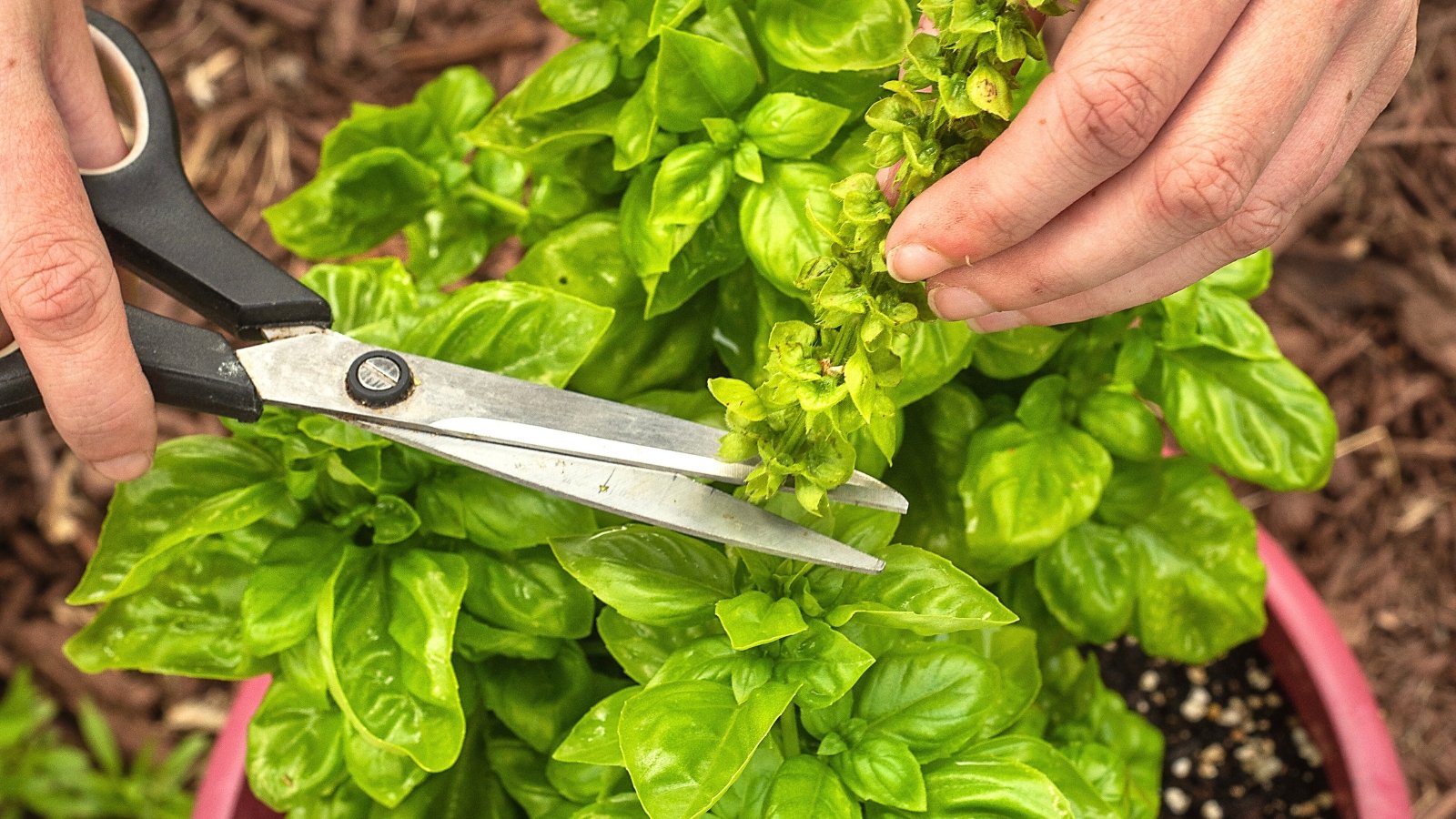 A clean cut near leaf nodes sparks fresh branching.
A clean cut near leaf nodes sparks fresh branching.To pinch off herb blooms, you want to remove the buds at the top of the stem. Remove them just above a healthy set of leaves or leaf nodes. The plant will branch out from below this point, and you won’t be left with a bare, leafless stem poking up on top.
Here’s a step-by-step guide:
-
- Locate the cluster of buds; it will nearly always be at the top of a stem.
- Move down the stem and find the nearest pair of leaves just below the flower cluster. This may be directly under the cluster, or you may need to move down to the next node if they are too close together to get a clean cut.
- Use your thumb and forefinger, or your tool, to remove the flower and a small portion of the stem.
- If you want to harvest at the same time, don’t hesitate to pinch farther down and make use of the tender top leaves.
Some herbs, like cilantro and dill, grow from a basal rosette of leaves. Their flowers don’t appear at the top of the leafy stems that you eat. Instead, they grow separate stems from the base and flower at the top. In this event, pinch the entire stem as far down as you can.
How Often to Pinch
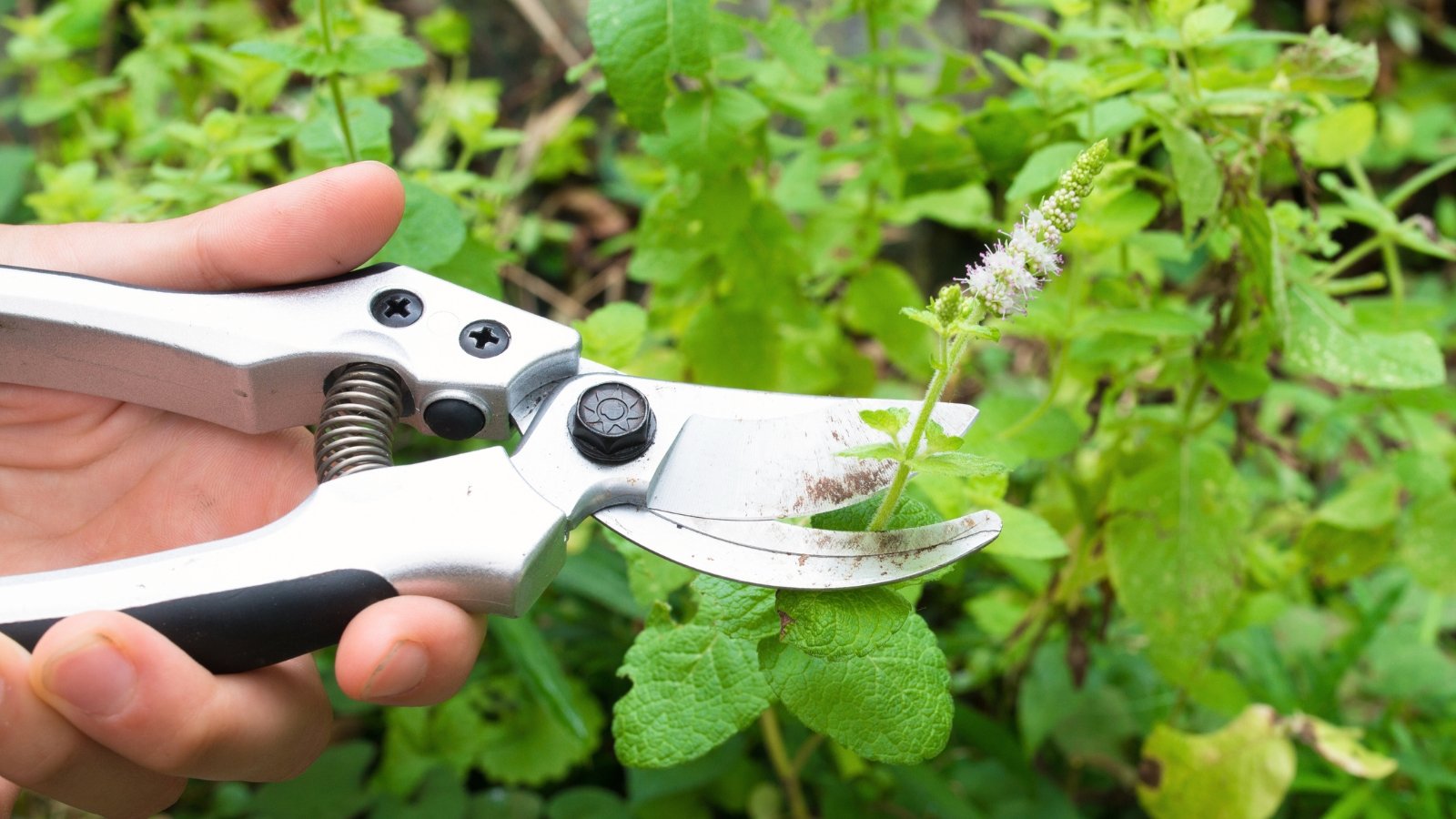 Daily garden strolls make surprise flowers less of a problem.
Daily garden strolls make surprise flowers less of a problem.You should pinch off herb blooms as often as you see them forming. In other words, do it early and often. Some herbs grow more slowly and take a long time to flower. I find that my oregano and thyme almost never need pinching off. I harvest these more often than they produce flowers.
Basil plants tend to need the most attention as they are quick to bolt. They’re also best eaten fresh, so I tend to harvest fewer leaves at one time.
For those plants that flower more freely and frequently, keep a closer eye. If you make a habit of peeking out at your herb plants on a regular basis, it’s easy to just take a pinch here and there!


 5 days ago
31
5 days ago
31
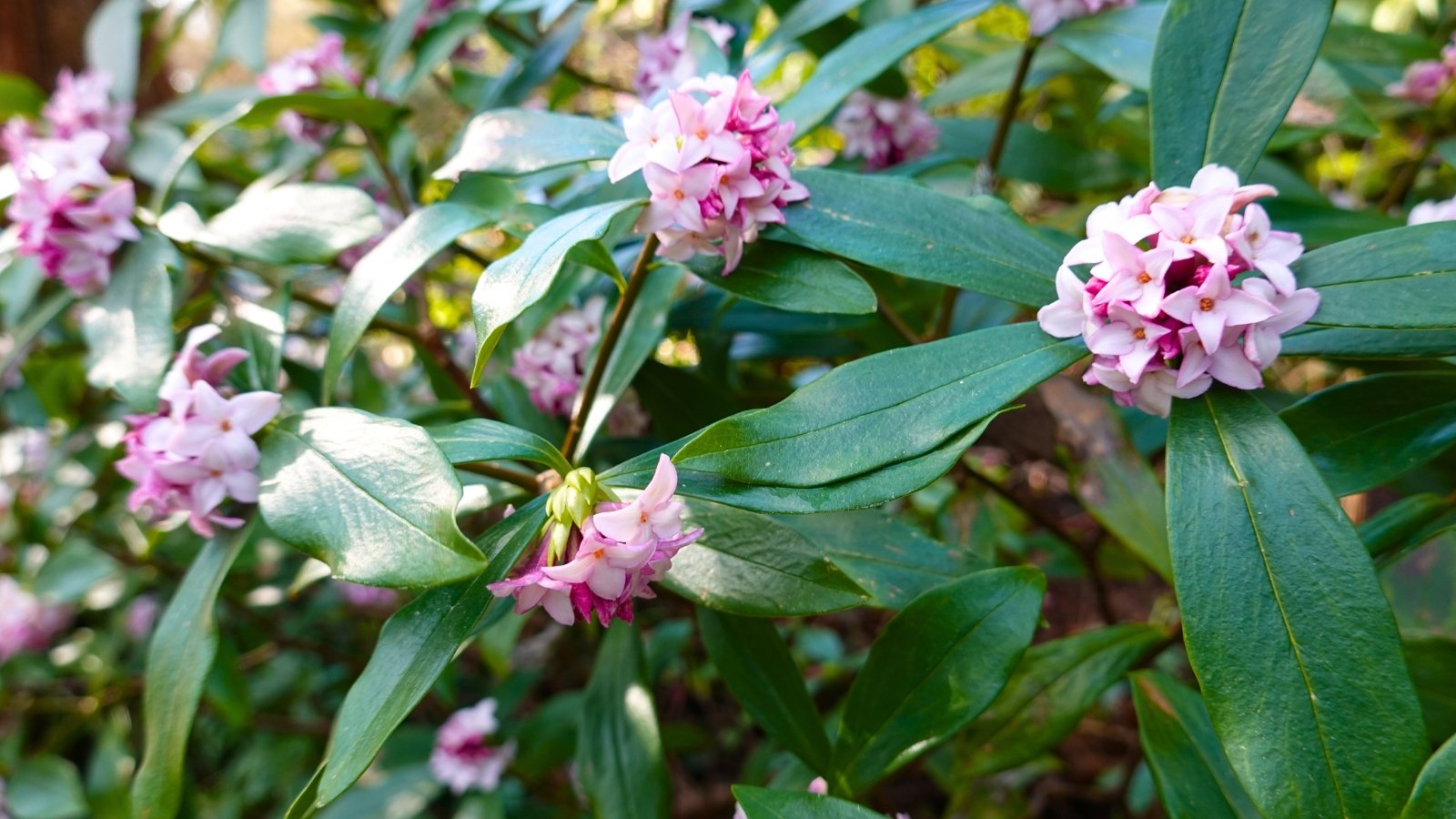

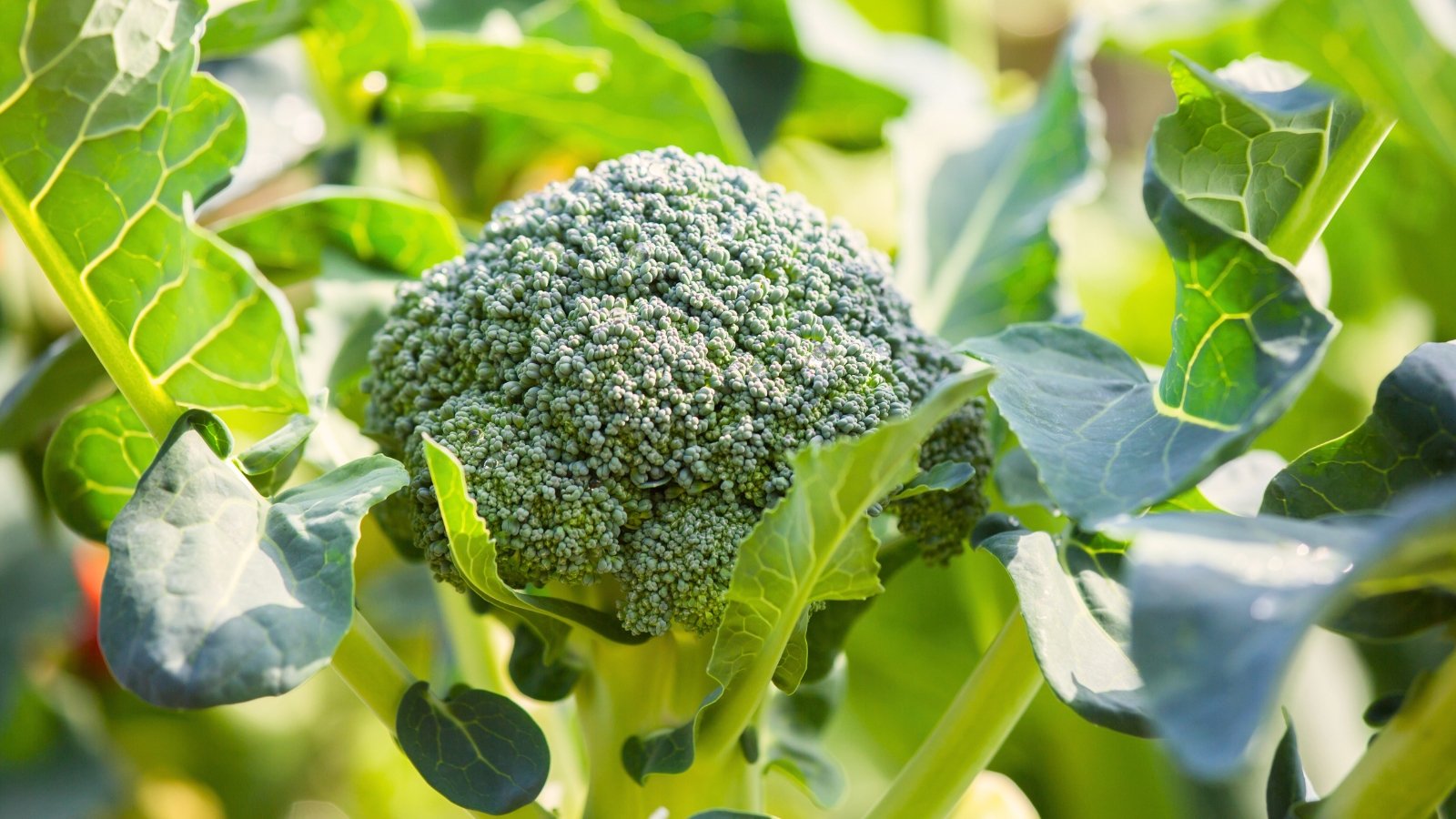

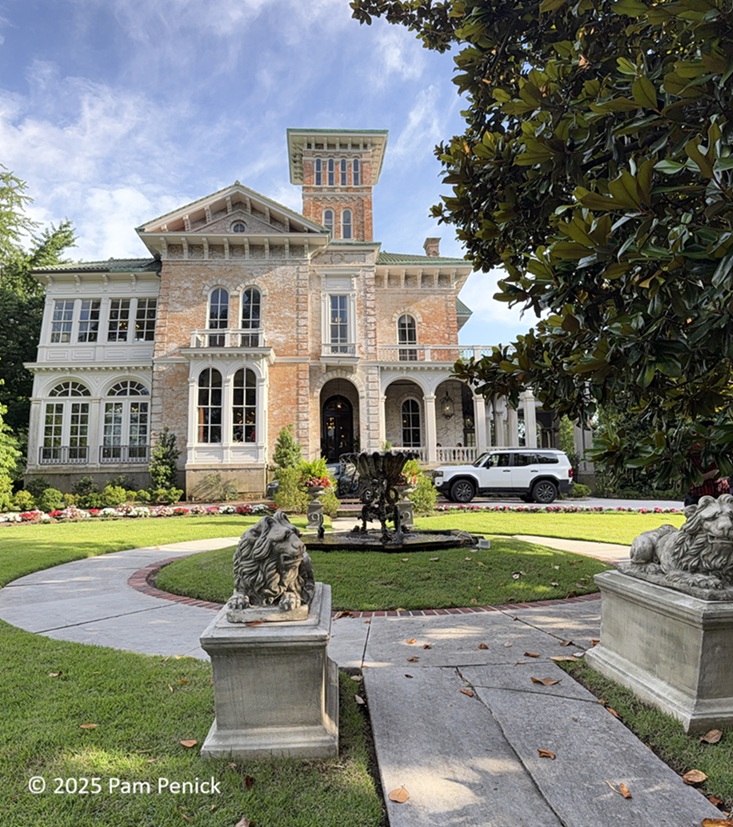
















 English (US) ·
English (US) ·  French (CA) ·
French (CA) ·